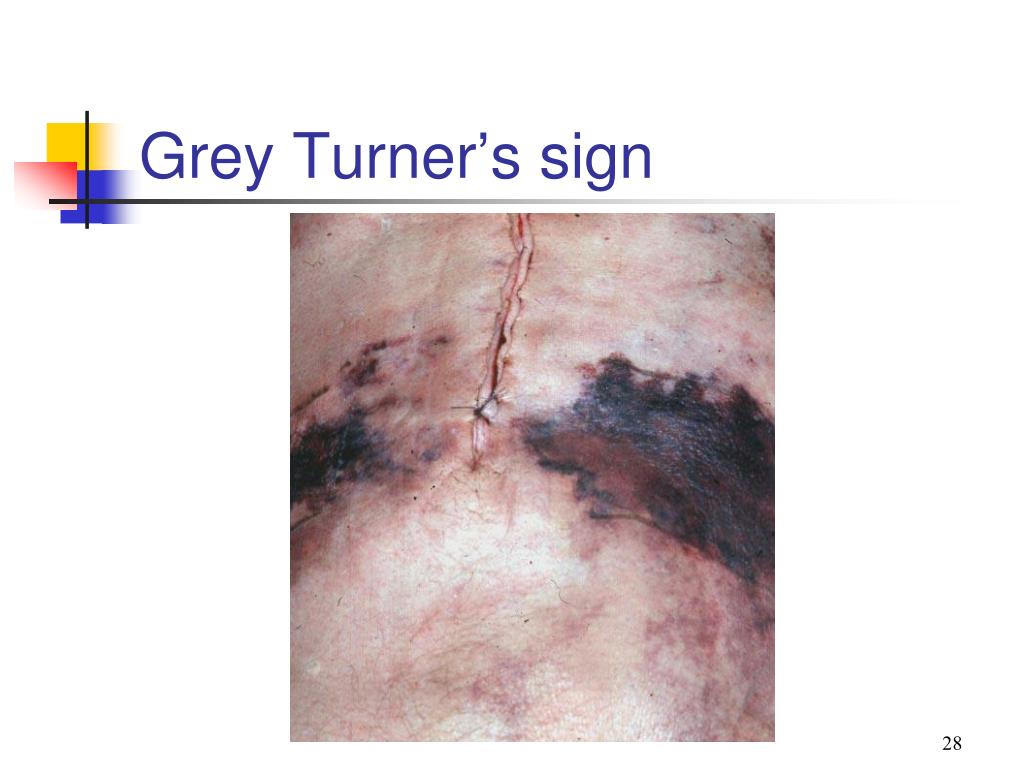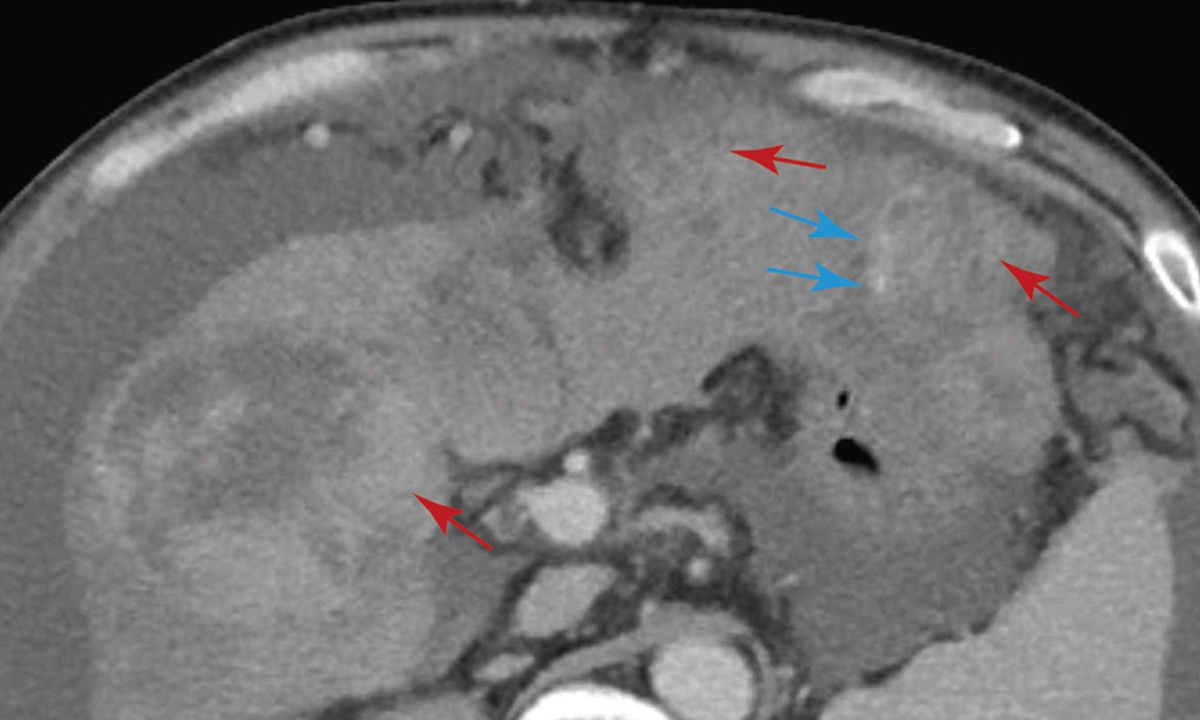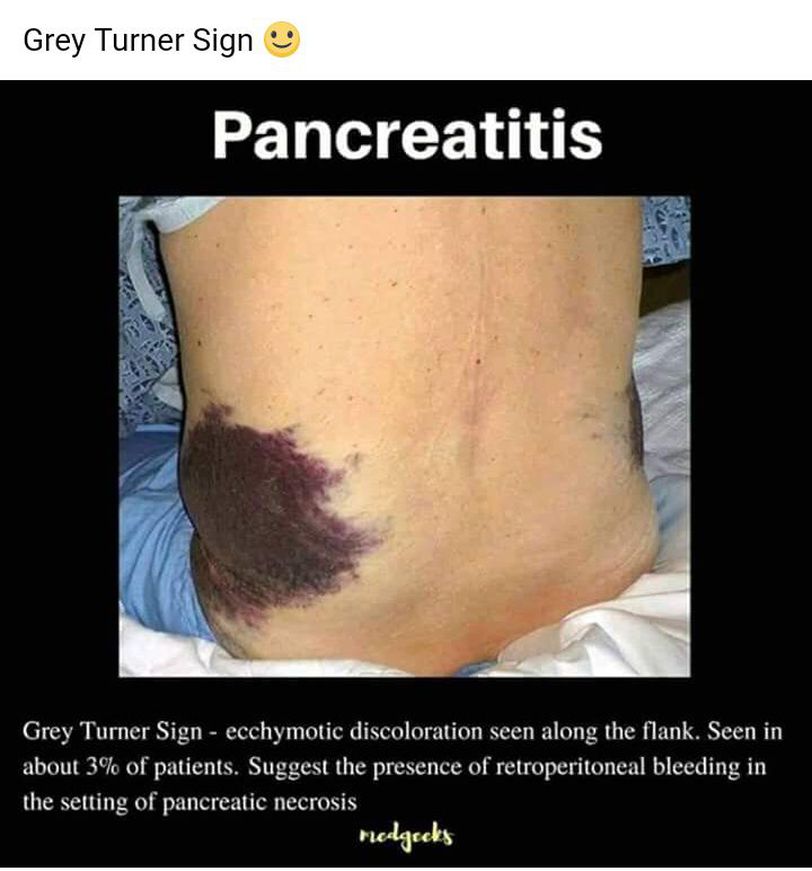
PPT THE MANAGEMENT OF ACUTE PANCREATITIS PowerPoint Presentation, free download ID5682989
Grey-Turner sign is a clinical finding characterized by the presence of ecchymosis or discoloration of the flanks, usually indicative of retroperitoneal hemorrhage or severe abdominal pathology. It is named after the physicians George Grey Turner and Ernest Turne, who first described this sign. This comprehensive article aims to provide a.

ACUTE PANCREATITIS Signs, Symptoms, Causes YouTube
The Grey Turner sign refers to the clinical finding of atraumatic flank ecchymosis, which is occasionally associated with retroperitoneal hemorrhage, classically due to hemorrhagic pancreatitis 2.

Pin on Trauma
Grey Turner sign is characterized by the appearance of purplish-bluish skin discoloration (ecchymosis) on the flanks due to internal bleeding. The color of ecchymosis will vary depending on the extent of RBCs breakdown in the tissues of the abdominal wall. Ecchymosis may appear as a greenish, bluish, purplish, and yellowish,

Grey Turner's sign (Medical Symptom) YouTube
Grey-Turner's sign. Grey-Turner's sign is bruising of the flanks. It occurs in severe, acute pancreatitis due to subcutaneous tracking of inflammatory, peripancreatic exudate from the pancreatic area of the retroperitoneum. It is also seen in severe abdominal injury, e.g. road traffic accidents, and in ruptured abdominal aortic aneurysm.

GreyTurner’s sign following iatrogenic duodenal perforation BMJ Case Reports
Grey Turner's sign is a well described butrarely seen sign usually indicating severe intra-abdominal pathology. Classically it is associated with severe acute pancreatitis but can beassociated with a number of other severe intra-abdominal conditions.

Figure 2 from Grey Turner's sign. Semantic Scholar
Non-traumatic abdominal ecchymosis, in particular - bruising of the flanks associated with retroperitoneal haemorrhage, originally described in acute pancreatitis. 1920 - The English surgeon George Grey Turner (1877-1951) published paper on ' Local discoloration of the abdominal wall as a sign of acute pancreatitis ' citing two cases.

(PDF) Grey Turner's sign in acute necrotizing pancreatitis
Grey Turner's sign is an uncommon subcutaneous manifestation of intra-abdominal pathology that manifests as ecchymosis or discoloration of the flanks. Classically it correlates with severe acute necrotizing pancreatitis, often in association with Cullen's sign (periumbilical ecchymosis).

PPT Abdominal Trauma PowerPoint Presentation ID2275990
Jan 14, 2022 Home Medical Specialty General Surgery Description Grey Turner sign: atraumatic abdominal ecchymosis, in particular - bruising of the flanks. George Grey Turner reported a ' dirty-green ' discolouration on both loins of a patient with acute pancreatitis (confirmed on operation)

Grey turner sign causes, pathophysiology, sign value YouTube
- Grey Turner sign - Gallstone in gallbladder US - CT scan acute interstitial edematous pancreatitis - CT scan necrotizing pancreatitis - CT scan acute peripancreatic fluid collections - CT scan acute necrotic collection - CT scan infected pancreatic necrosis RELATED TOPICS. Patient education: Acute pancreatitis (Beyond the Basics) Acute calculous cholecystitis: Clinical features and diagnosis

(PDF) Grey Turner’s sign in severe acute pancreatitis
Grey Turner's sign refers to bruising of the flanks, the part of the body between the last rib and the top of the hip. The bruising appears as a blue discoloration, and is a sign of retroperitoneal hemorrhage, or bleeding behind the peritoneum, which is a lining of the abdominal cavity.

An unusual cause of Grey Turner's sign BMJ Case Reports
Classification Complications Symptoms and Signs Diagnosis Prognosis Treatment Key Points More Information Acute pancreatitis is acute inflammation of the pancreas (and, sometimes, adjacent tissues). The most common triggers are gallstones and alcohol intake.

Grey Turner Sign In Pancreatitis / Classically, it is associated with severe acute
Grey Turner's sign refers to bruising of the flanks, the part of the body between the last rib and the top of the hip. The bruising appears as a blue discoloration, [1] and is a sign of retroperitoneal hemorrhage, or bleeding behind the peritoneum, which is a lining of the abdominal cavity.

Cullen and Grey Turner signs in abdominal pain The Medical Journal of Australia
Grey Turner's sign is a well described butrarely seen sign usually indicating severe intra‐abdominal pathology. Classically it is associated with severe acute pancreatitis but can beassociated with a number of other severe intra‐abdominal conditions.

Grey Turner Sign MEDizzy
Grey Turner and Cullen Signs. This patient displays both flank and periumbilical ecchymoses characteristic of Grey Turner and Cullen signs. (Photo contributor: Michael Ritter, MD.) View Full Size | | Download Slide (.ppt)

Images of Note Grey Turner and Cullen Signs Consult QD
Grey Turner's sign is an uncommon subcutaneous manifestation of intra-abdominal pathology that manifests as ecchymosis or discoloration of the flanks. [1] Classically it correlates with severe acute necrotizing pancreatitis, often in association with Cullen's sign (periumbilical ecchymosis).

Pin on Trauma
The co-occurence of the Cullen sign and Grey Turner sign is common with necrotizing pancreatitis, a complication of pancreatitis in which parts of the pancreas start to die. Causes of Cullen Sign